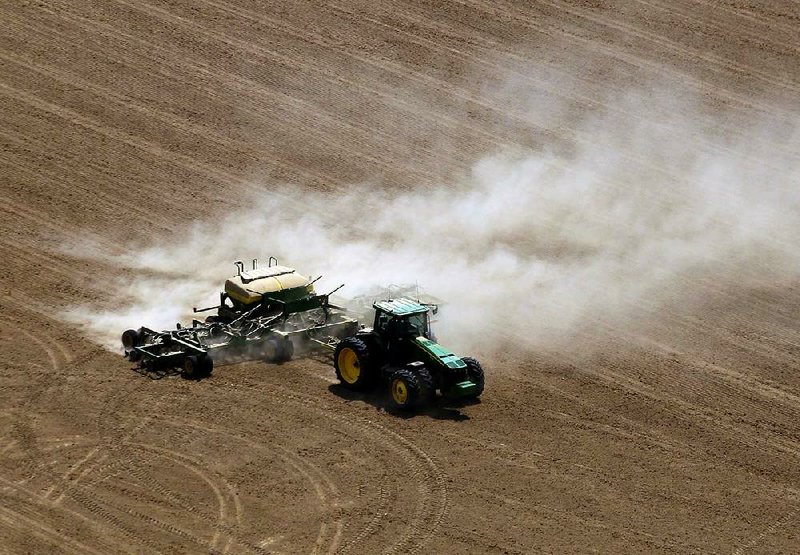Arkansas’ corn producers are nearly finished planting after delays created by wet weather.
The U.S. Department of Agriculture’s National Agricultural Statistics Service reported that farmers had planted 99 percent of the state’s corn by the end of last week, far later than ideal for the crop.
“If you’re planting corn now, you’re not going to see optimal yield,” said Zachary Taylor, director of marketing for the Arkansas Agriculture Department. “You’re out of the window of opportunity.”
Last year, a warm spring allowed farmers to plant early and generate record yields despite drought conditions. This year’s colder, wetter spring delayed planting and is causing some farmers to turn to other crops.
“Some of that corn acreage that didn’t get planted or the rain flooded out, that could still end up as cotton, soybeans or rice,” Taylor said. “You can plant soybeans later in the year and still get a good harvest.”
The U.S. Department of Agriculture estimated that 1 million acres of corn would be planted in Arkansas this year - the most since 1951 - but Taylor said the estimate turned out to be too high. He expects the total to fall closer to 750,000 acres.
“We’ve had so much rain, it’s brought some areas out of drought but it can take awhile to dry out,” he said.
Jason Kelley, an agronomist with the University of Arkansas System Division of Agriculture, said he also expects that fewer than 1 million acres of corn were planted this year. He estimated the total to be closer to 800,000 acres.
“It may have been accurate based on original intention, but we don’t have a million acres right now,” he said. “It’s getting late for cotton; it’s getting late for rice. Soybeans still work a little bit later.”
Wet fields are worst in the northeast part of the state where the soil contains more clay. It can take days for fields to dry out enough to allow farmers to work them.
Kelley said high winds also have damaged efforts to spray herbicides and some of the southern areas of the state have started irrigating crops.
“It’s taken a whole month for the corn to come up,” he said. “It takes 14 days when it’s good.”
Brandy Carroll, market analyst for the Soybean Promotion Board, said it’s likely that more soybeans will be planted than predicted because of poor corn prospects, but the high cost of seed will deter many farmers.
“We’re pretty near a point where you can’t expect [corn] to mature in time,” she said. “It is definitely possible to turn to soybeans. They can be planted and be viable later than either rice or corn.”
Business, Pages 31 on 05/31/2013

